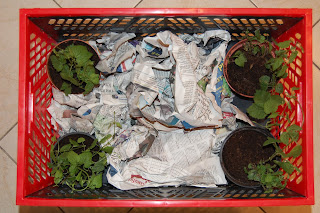monday, december 19th, 2011
I collect my two years of hops production in this report.
INTRODUCTION
Hops are members of the plant family Cannabinaceae, which includes hemp and cannabis. Hops are native to the temperate zones of the northern hemisphere and are grown worldwide between the 30th and 50th latitudes, north or south. They are extremely hardy and long-lived, and under good conditions each vine will produce up to 0.8kg (2 lbs) of hops a year.
PRODUCTION
The most common method of reproduction of hops is by cutting off and replanting rhizomes. Rhizome is a characteristically horizontal stem of a plant that is usually found underground, sending out roots and shoots from its nodes. From shoots the plant reborn with the same type (male or female). Hops can also grow up from seeds, but both male or female plants can grow up. Male plants contain much fewer resins than female plants, so, for homebrewing, the useful plant is the female with her flower or cone. Thus people prefer starting from rhizomes.
I started from four rhizomes of Cascade. I plant them into four pots.
APRIL 2010
There are dozens of different methods of hops structures. I chose a vertical net supported by wodden stakes. The Net must be very tall because the plant grow up about 4-5 meters. I built 2.5 meters high and 2 meters long.
Two months later....
One year later...
FLOWERING
The plant was blooming in May....
HARVEST TIME
Timing
of the hops harvest is critical. The goal is to pick hops when the
lupulin is most aromatic and the cones are starting to dry. Too dry, and
the cones will yellow and shatter while being processed, and the
lupulin will start to develop fascinatingly unattractive ‘skunky’ or
oxidized aromas.
DRYING
Hops
must be dried rapidly, over even heat not over 60°C (140°F). Good air
flow is essential. Over the drying period the hops go from about 80%
moisture to 8% or so, losing weight and increasing friability. The hops
should be dry within 12 hours, and should be packaged as soon as they
are cool.
PACKAGING
I made vacuum packaging.











Nessun commento:
Posta un commento